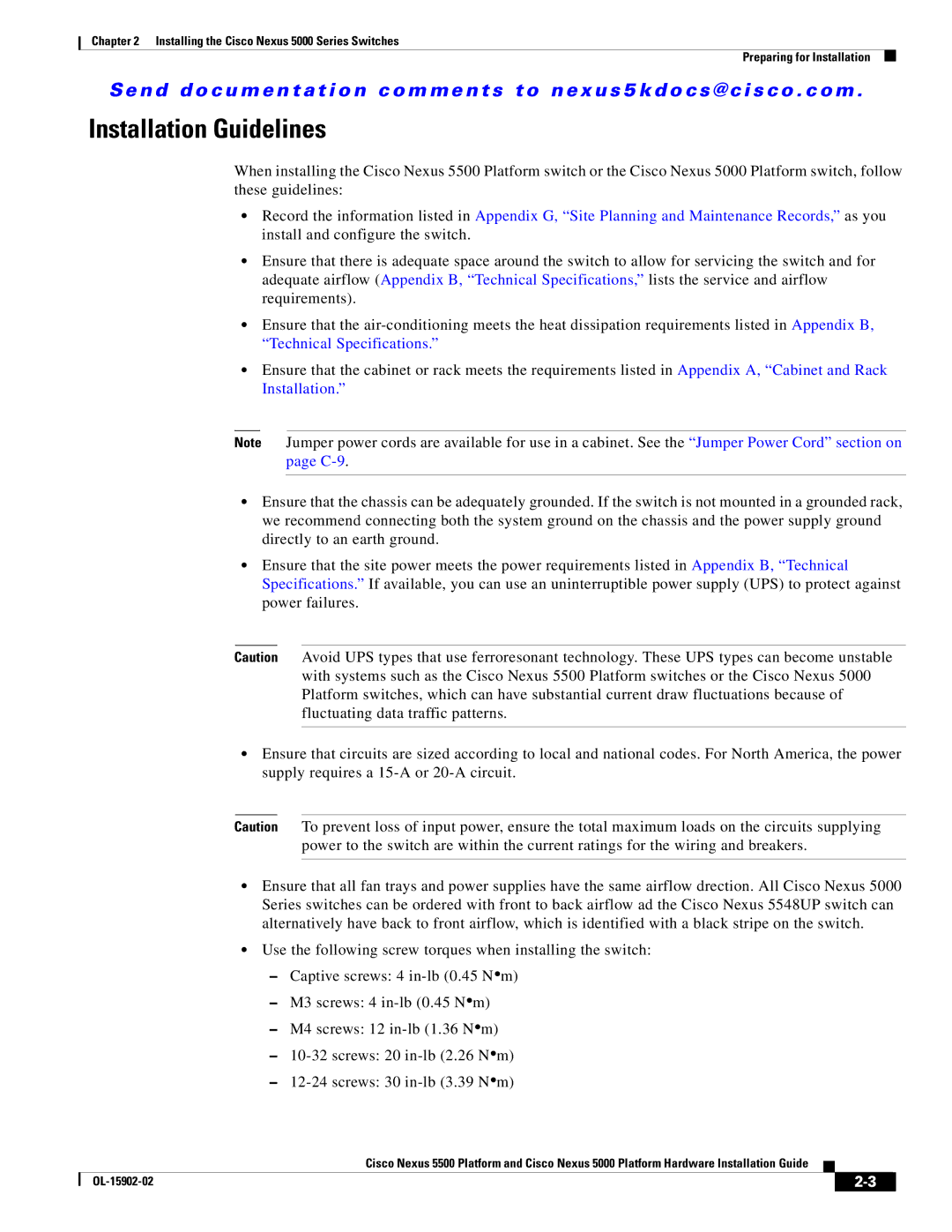
Chapter 2 Installing the Cisco Nexus 5000 Series Switches
Preparing for Installation
Se n d d o c u m e n t a t i o n c o m m e n t s t o n ex u s 5 k d o c s @ c i s c o . c o m .
Installation Guidelines
When installing the Cisco Nexus 5500 Platform switch or the Cisco Nexus 5000 Platform switch, follow these guidelines:
•Record the information listed in Appendix G, “Site Planning and Maintenance Records,” as you install and configure the switch.
•Ensure that there is adequate space around the switch to allow for servicing the switch and for adequate airflow (Appendix B, “Technical Specifications,” lists the service and airflow requirements).
•Ensure that the
•Ensure that the cabinet or rack meets the requirements listed in Appendix A, “Cabinet and Rack Installation.”
Note Jumper power cords are available for use in a cabinet. See the “Jumper Power Cord” section on page
•Ensure that the chassis can be adequately grounded. If the switch is not mounted in a grounded rack, we recommend connecting both the system ground on the chassis and the power supply ground directly to an earth ground.
•Ensure that the site power meets the power requirements listed in Appendix B, “Technical Specifications.” If available, you can use an uninterruptible power supply (UPS) to protect against power failures.
Caution Avoid UPS types that use ferroresonant technology. These UPS types can become unstable with systems such as the Cisco Nexus 5500 Platform switches or the Cisco Nexus 5000 Platform switches, which can have substantial current draw fluctuations because of fluctuating data traffic patterns.
•Ensure that circuits are sized according to local and national codes. For North America, the power supply requires a
Caution To prevent loss of input power, ensure the total maximum loads on the circuits supplying power to the switch are within the current ratings for the wiring and breakers.
•Ensure that all fan trays and power supplies have the same airflow drection. All Cisco Nexus 5000 Series switches can be ordered with front to back airflow ad the Cisco Nexus 5548UP switch can alternatively have back to front airflow, which is identified with a black stripe on the switch.
•Use the following screw torques when installing the switch:
–Captive screws: 4
–M3 screws: 4
–M4 screws: 12
–
–
Cisco Nexus 5500 Platform and Cisco Nexus 5000 Platform Hardware Installation Guide
|
| ||
|
|
